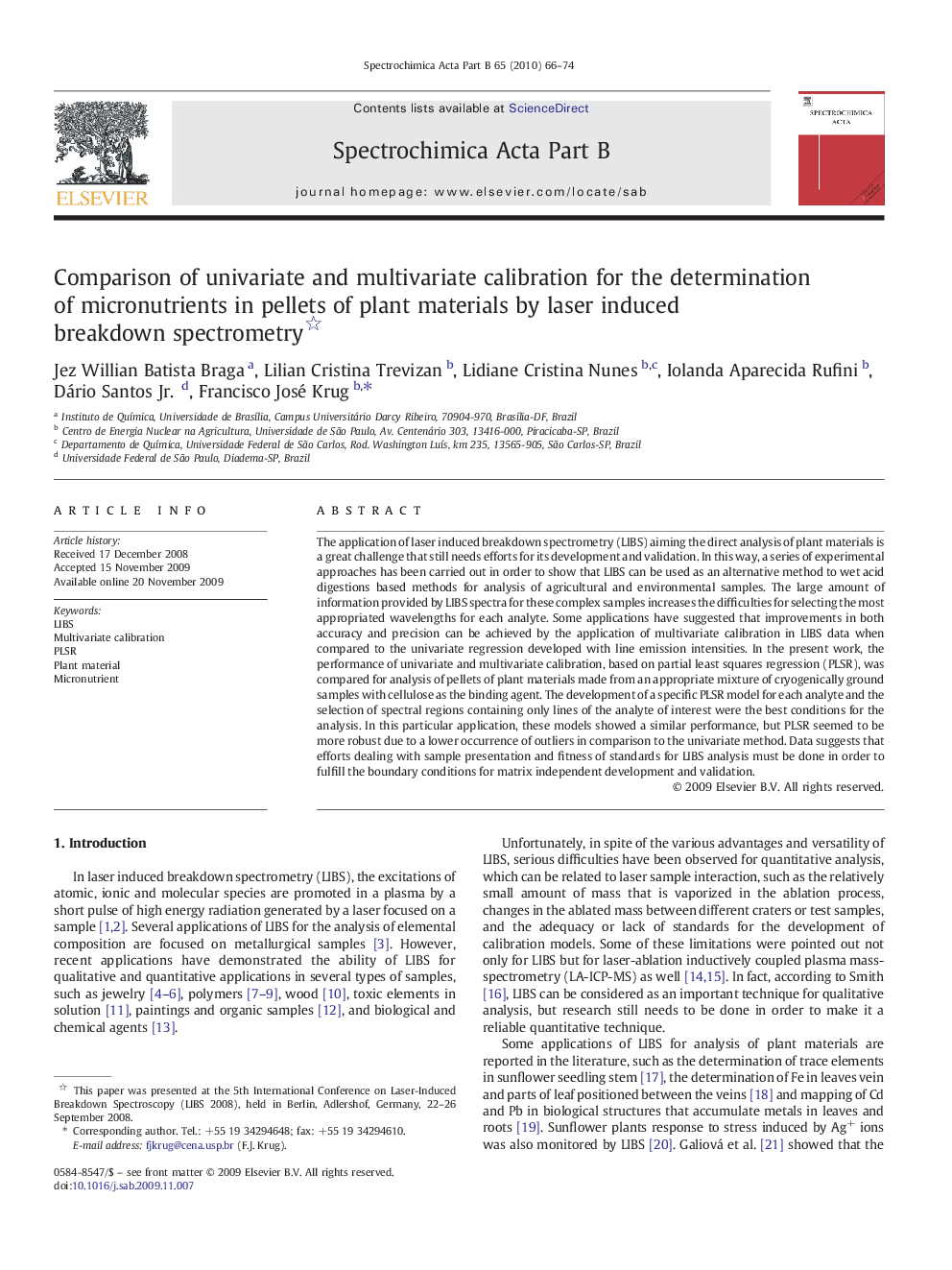| Article ID | Journal | Published Year | Pages | File Type |
|---|---|---|---|---|
| 1240622 | Spectrochimica Acta Part B: Atomic Spectroscopy | 2010 | 9 Pages |
The application of laser induced breakdown spectrometry (LIBS) aiming the direct analysis of plant materials is a great challenge that still needs efforts for its development and validation. In this way, a series of experimental approaches has been carried out in order to show that LIBS can be used as an alternative method to wet acid digestions based methods for analysis of agricultural and environmental samples. The large amount of information provided by LIBS spectra for these complex samples increases the difficulties for selecting the most appropriated wavelengths for each analyte. Some applications have suggested that improvements in both accuracy and precision can be achieved by the application of multivariate calibration in LIBS data when compared to the univariate regression developed with line emission intensities. In the present work, the performance of univariate and multivariate calibration, based on partial least squares regression (PLSR), was compared for analysis of pellets of plant materials made from an appropriate mixture of cryogenically ground samples with cellulose as the binding agent. The development of a specific PLSR model for each analyte and the selection of spectral regions containing only lines of the analyte of interest were the best conditions for the analysis. In this particular application, these models showed a similar performance, but PLSR seemed to be more robust due to a lower occurrence of outliers in comparison to the univariate method. Data suggests that efforts dealing with sample presentation and fitness of standards for LIBS analysis must be done in order to fulfill the boundary conditions for matrix independent development and validation.
